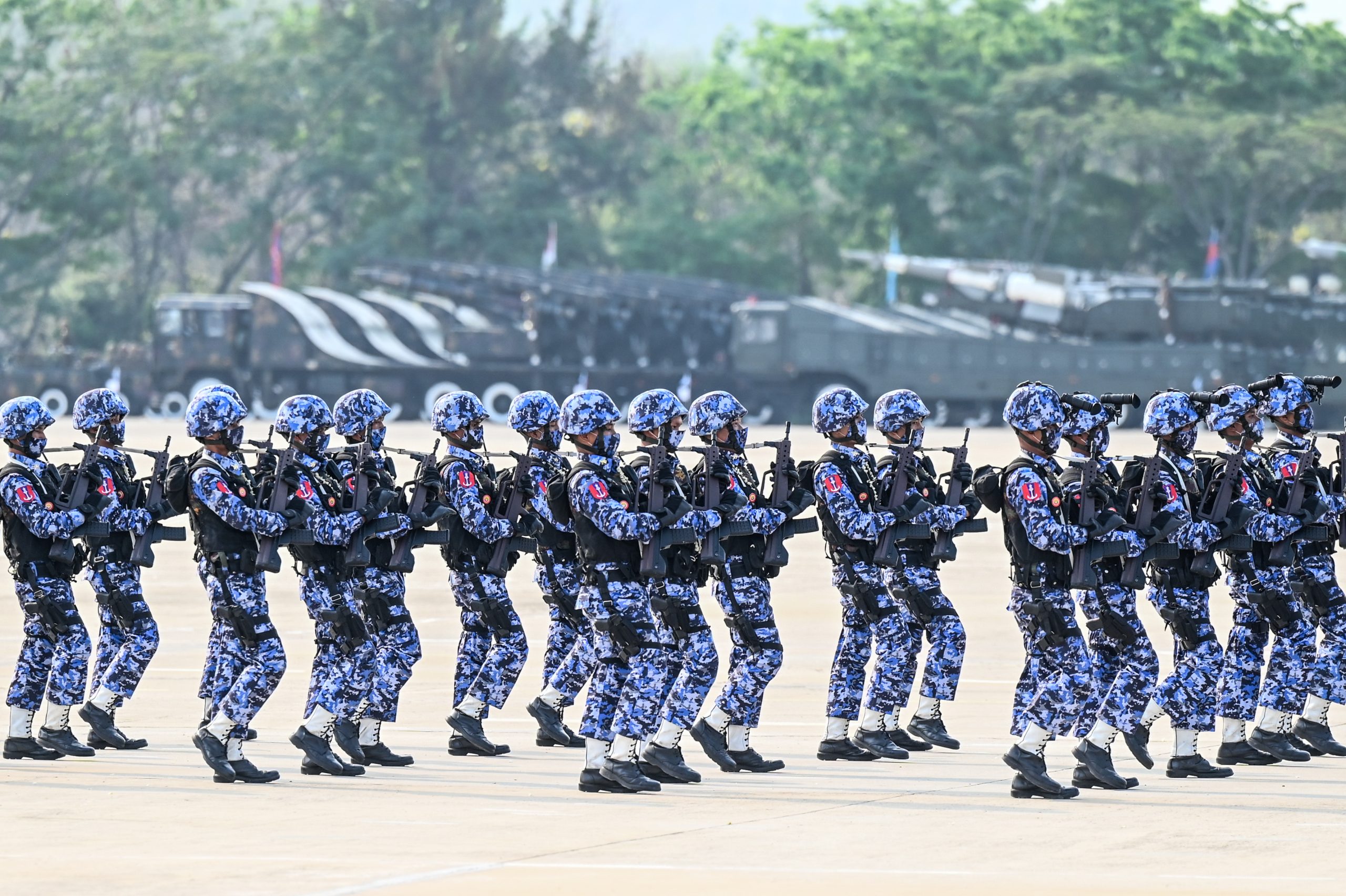Myanmar’s civilian National Unity Government (NUG) said on Friday on the second anniversary of the formation of its armed wing the People’s Defense Force (PDF) that its military strategy has weakened the enemy physically and mentally, while threatening the junta’s control of the country.
“Military operations have been carried out effectively throughout the country in line with the strategy of applying pressure and attacking from all sides, known as multi-dimensional warfare, in order to wear down the enemy,” the NUG’s defense ministry said in a statement.
The statement said that PDF operations have targeted not only the military regime’s forward bases and columns, but also their rear bases such as battalion headquarters, regional command headquarters, air bases, defense equipment factories, military airfields, and oil storage tanks.
The NUG’s defense ministry added that while the junta has been weakened, the PDFs have grown in numbers and strength, surpassing that of the enemy.
There are approximately 300 PDF battalions and columns nationwide, while other township public defense forces have been formed in 250 out of the country’s 330 townships.
According to the ministry, 1,608 PDF fighters were killed and 1,583 injured in clashes with junta forces, while around 30,000 regime forces have been killed. However, some analysts estimate the junta’s battlefield losses to be somewhere between 10,000 and 15,000 over two years.

“The people’s revolution began with the phase of strategic defense and it has now progressed to the phase of strategic equilibrium,” the defense ministry said, adding that to enter the final phase, the phase of strategic counter offensive, the ministry is working to acquire the necessary funds and arms and equipment.
An analysis published by the U.S-based think tank US Institute of Peace (USIP) on Friday stated that the size of Myanmar’s military has been overestimated by the international community. USIP says the true number is around half of the common estimate of 300,000-400,000.
Ye Myo Hein, author of the analysis and a visiting scholar with USIP, concluded that the military currently has about 150,000 personnel, including roughly 70,000 combat soldiers, while at least 21,000 service members have been lost through casualties, desertions and defections since the 2021 coup.
The estimates are based on extensive interviews with military deserters and defectors, internal military directives and meeting notes, historical records of troop movements and sizes, and casualty counts from primary conflict data and military hospital records, stated Ye Myo Hein.
“At this troop level, the Sit-Tat [the Burmese word for Myanmar’s armed forces] is barely able to sustain itself as a fighting force, much less a government,” he added.
He also suggested that it is no longer reasonable to assume that an enfeebled military will overcome the resistance movement and consolidate its praetorian rule.
“Therefore, the international community should stop engaging with the junta as if it is bound to win and the only relevant player in achieving stability. That approach only bolsters the generals’ delusion that they will defeat the opposition and delays the time until the junta comes to the table,” the scholar wrote.

















